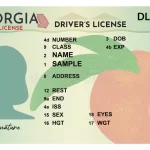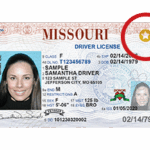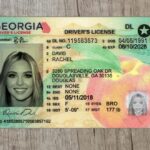Navigating the Murky Waters: Understanding Flood Damage Car Titles and Protecting Yourself

Floods. They’re a force of nature, capable of devastating entire communities and leaving behind a trail of destruction. Beyond the immediate impact on homes and businesses, floods can also wreak havoc on our vehicles, leaving them waterlogged and potentially unsafe. And when a vehicle is significantly damaged by flooding, it receives a special designation on its title: a flood damage car title.
Understanding flood-damaged car titles is crucial for both buyers and sellers. For buyers, it’s a critical red flag warning of potential hidden problems that could compromise safety, performance, and long-term value. For sellers, understanding the legal and ethical obligations surrounding disclosure is paramount.
This comprehensive guide will delve into the complexities of flood-damaged car titles, covering everything from identifying flood damage to understanding your rights and responsibilities, ensuring you navigate this potentially turbulent market with confidence.
Why is Understanding Flood Damage Car Titles Important?
Ignoring the significance of a flood-damaged car title can lead to a host of problems:
- Safety Risks: Floodwater can contaminate a vehicle’s electrical systems, brakes, airbags, and other vital components. Corrosion and malfunction can occur even after attempts to repair the damage, putting drivers and passengers at risk.
- Mechanical Problems: Engine damage, transmission issues, and fuel system contamination are common consequences of flooding. These problems can lead to expensive repairs down the line.
- Health Hazards: Mold and mildew growth are common in flood-damaged vehicles, posing respiratory health risks to occupants.
- Reduced Value: A vehicle with a flood damage title is worth significantly less than a comparable vehicle without a history of flood damage.
- Resale Difficulties: Selling a flood-damaged vehicle can be challenging, as many buyers are understandably wary.
- Legal Consequences: Failing to disclose flood damage when selling a vehicle can lead to legal repercussions, including lawsuits and fines.
What Does a Flood-Damaged Car Title Mean?
A flood damage car title is a legal document issued by a state’s Department of Motor Vehicles (DMV) indicating that a vehicle has been declared a total loss or sustained significant damage as a result of flooding. While the exact criteria vary from state to state, generally, a vehicle qualifies for a flood damage title if the floodwater reached a certain level within the vehicle’s interior, often to the dashboard or higher, or if the insurance company determined the cost of repairs exceeded a specific percentage of the vehicle’s pre-flood value.
Key Differences Between Flood Titles and Other Title Designations:
It’s important to distinguish between a flood damage title and other common title designations:
- Clean Title: Indicates the vehicle has never been declared a total loss or sustained significant damage.
- Salvage Title: Issued when a vehicle has been declared a total loss due to damage from accidents, fire, vandalism, or other causes. Flood damage can result in a salvage title as well.
- Rebuilt/Reconstructed Title: Issued when a vehicle with a salvage title has been repaired and inspected by the state’s DMV, certifying its roadworthiness.
- Branded Title: This is a broader term encompassing titles indicating damage or other issues, including flood damage, salvage, and rebuilt titles.
The key difference between a flood damage title and a salvage title relating to accident damage, for example, is the source of the damage. A flood title specifically denotes damage caused by floodwater. A car can have both a salvage and a flood damage title, especially if it was in an accident and then flooded.
How Flood Damage Happens: Common Scenarios
Flood damage can occur in various scenarios:
- Natural Disasters: Hurricanes, severe storms, and overflowing rivers are common causes of widespread flooding.
- Flash Floods: Sudden and intense rainfall can lead to flash floods, inundating vehicles parked on streets or in low-lying areas.
- Dam Failures: The failure of a dam can release a massive amount of water, causing widespread flooding.
- Leaking Drainage Systems: Backups in sewer systems or inadequate drainage can cause flooding in streets and parking garages.
- Standing Water: Driving through deep standing water can cause hydrolock, which can be catastrophic to the engine.
Identifying Flood Damage: Red Flags to Watch Out For
Even if a vehicle doesn’t have a flood damage title, it’s still possible it sustained flood damage and the title wasn’t properly branded. Here are some red flags to look out for when inspecting a used vehicle:
- Musty or Moldy Odor: A persistent musty smell, even after cleaning, is a strong indicator of water damage.
- Water Stains: Check the headliner, carpets, and upholstery for water stains or discoloration.
- Rust and Corrosion: Inspect the undercarriage, engine components, and interior metal parts for signs of rust and corrosion.
- Mud or Silt: Look for mud or silt in the glove compartment, under the seats, and in other hidden areas.
- Discolored or Cloudy Lights: Check the headlights, taillights, and turn signals for discoloration or condensation.
- Electrical Problems: Pay attention to any electrical malfunctions, such as flickering lights, non-working accessories, or a dead battery.
- Corroded Connectors: Inspect electrical connectors and wiring harnesses for corrosion.
- Unusual Upholstery or Carpet: If the upholstery or carpet appears newer than the rest of the vehicle, it could be an attempt to conceal water damage.
- Title Washing: Be wary of vehicles with titles from different states, as title washing (moving a vehicle to another state to obtain a clean title) is a common tactic used to conceal flood damage.
- Check the VIN: Enter the Vehicle Identification Number (VIN) into the National Insurance Crime Bureau (NICB) VINCheck database (a free service) and other online VIN history reports to check for flood damage reports. While not foolproof, these reports can provide valuable information.
- Uneven Gaps: Check door and panel gaps for consistency. Flooding can warp body panels. Look for signs of rust or corrosion in these areas, too.
- Water Lines: Check inside the trunk and under the hood for water lines. These can be subtle but indicate how high the water reached.
- Test Drive Thoroughly: Perform a thorough test drive, paying attention to how the vehicle handles, brakes, and shifts.
- Professional Inspection: The best way to ensure a vehicle is free of flood damage is to have it inspected by a qualified mechanic.
The Role of Insurance Companies in Flood Damage:
Insurance companies play a critical role in identifying and reporting flood-damaged vehicles. When a vehicle is insured and sustains flood damage, the insurance company typically assesses the damage and determines whether the vehicle is a total loss. If it is, the insurance company pays the owner the vehicle’s pre-flood value and takes possession of the vehicle. The insurance company then typically brands the title accordingly.
State Laws and Regulations Regarding Flood Damage Disclosure:
State laws regarding flood damage disclosure vary. Some states have strict laws requiring sellers to disclose any known flood damage to potential buyers, while others have weaker regulations. Some states require the disclosure of flood damage regardless of whether the vehicle has been branded with a flood title, while others only require disclosure if the title is indeed branded. It’s essential to research the specific laws in your state.
What to Do if You Suspect a Vehicle Has Flood Damage:
If you suspect a vehicle has flood damage, take the following steps:
- Walk away: If you have strong suspicions, it’s often best to simply walk away from the deal.
- Consult a Mechanic: Have a qualified mechanic inspect the vehicle thoroughly.
- Obtain a Vehicle History Report: Purchase a comprehensive vehicle history report from a reputable provider.
- Contact the DMV: Contact your state’s DMV to inquire about the vehicle’s title history.
- Research the Seller: Research the seller’s reputation and check for any complaints or negative reviews.
- Negotiate the Price: If you’re still interested in the vehicle, negotiate the price to reflect the potential risks associated with flood damage. Remember, a high discount should be a major red flag, and may indicate that the seller knows the vehicle has flood damage that is not properly disclosed.
Buying a Flood-Damaged Vehicle: Is it Ever a Good Idea?
While buying a flood-damaged vehicle is generally not recommended, there may be certain situations where it could be considered, but only with extreme caution and a full understanding of the risks.
- Expert Repair and Inspection: If the vehicle has been professionally repaired and inspected, and you have documentation to prove it, it might be acceptable.
- Extremely Low Price: The price must be significantly lower than the market value of a comparable vehicle without flood damage.
- Limited Use: The vehicle is intended for limited use, such as off-road driving or as a project car.
- Full Disclosure: The seller is transparent about the flood damage and provides all relevant information.
Even in these scenarios, it’s crucial to remember the potential safety risks and long-term reliability issues associated with flood-damaged vehicles.
Selling a Flood-Damaged Vehicle: Your Legal and Ethical Obligations
If you own a flood-damaged vehicle, you have a legal and ethical obligation to disclose the damage to potential buyers. This includes:
- Truthful Representation: Be honest and transparent about the vehicle’s history and condition.
- Disclosure of Title Designation: Disclose the flood damage designation on the title.
- Written Disclosure: Provide a written disclosure statement to the buyer, outlining the flood damage and any repairs that have been made.
- Compliance with State Laws: Comply with all state laws regarding flood damage disclosure.
Failing to disclose flood damage can lead to serious legal consequences, including lawsuits, fines, and even criminal charges. Moreover, it’s simply unethical to knowingly sell a potentially unsafe vehicle without informing the buyer of its history.
Flood Insurance and Vehicle Coverage:
Standard auto insurance policies typically do not cover flood damage. Flood insurance is usually a separate policy, often obtained through the National Flood Insurance Program (NFIP). If your vehicle is damaged in a flood, your flood insurance policy may cover the cost of repairs or replacement, depending on the terms and conditions of your policy. Comprehensive coverage may also cover a portion of the damage if flooding results from natural events.
Protecting Yourself from Flood Damage Scams:
Unfortunately, unscrupulous individuals may try to conceal flood damage and sell flood-damaged vehicles without proper disclosure. Here are some tips to protect yourself from flood damage scams:
- Be Suspicious of Low Prices: If a price seems too good to be true, it probably is.
- Thorough Inspection: Always inspect the vehicle thoroughly, both visually and mechanically.
- Vehicle History Report: Obtain a comprehensive vehicle history report from a reputable provider.
- Trust Your Gut: If something doesn’t feel right, trust your instincts and walk away.
- Buy from Reputable Dealers: Purchase used vehicles from reputable dealers with a solid track record.
- Be Wary of Private Sales: Be extra cautious when buying from private sellers, as they may be more likely to conceal flood damage.
- Document Everything: Keep thorough records of all communication, inspections, and transactions.
Resources for Further Information:
- National Insurance Crime Bureau (NICB): https://www.nicb.org/ (VINCheck tool)
- Your State’s Department of Motor Vehicles (DMV): (Information on title designations and disclosure laws)
- National Flood Insurance Program (NFIP): https://www.fema.gov/flood-insurance
- Reputable Vehicle History Report Providers: (e.g., Carfax, AutoCheck)
- Consumer Protection Agencies: (Your state’s consumer protection agency)
Conclusion: Navigating the Waters of Vehicle Acquisition
Navigating the used car market can be tricky, especially when dealing with potentially flood-damaged vehicles. By understanding the implications of flood damage to car titles, knowing what to look for, and being aware of your rights and responsibilities, you can protect yourself from scams and make informed decisions. Remember, due diligence is key. A thorough inspection, a comprehensive vehicle history report, and a healthy dose of skepticism can go a long way in ensuring you don’t end up with a lemon. Don’t be afraid to walk away from a deal if something seems fishy. In the long run, it’s better to be safe than sorry, especially when it comes to something as important as your vehicle. Taking the time to investigate and understand the history of a vehicle can save you thousands of dollars, countless headaches, and potentially even your safety.















